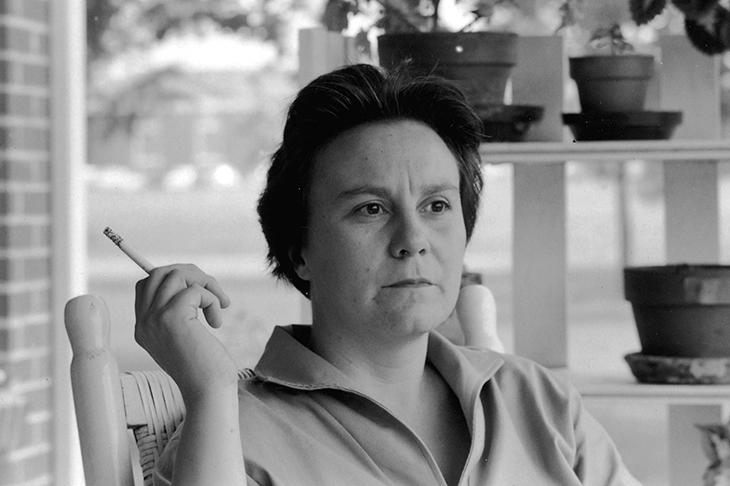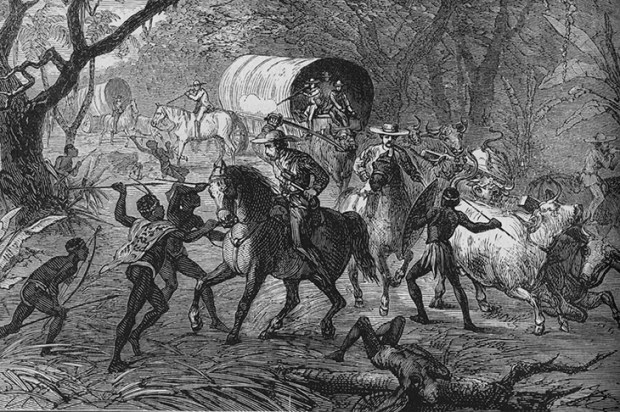Harper Lee’s To Kill a Mockingbird remains one of the most beloved American novels of all time. Famously, Lee never completed another book, once declaring she’d ‘said what I wanted to say and I will not say it again’. But a journalist who went to Lee’s home in Monroeville, Alabama in 2015 learned of another book that Lee had worked on, perhaps for decades — again the story of an Alabama courtroom trial with a black defendant and white lawyer, but this one was true. Lee does not appear to have finished that book, but the journalist who discovered the story, Casey Cep, has: the result is Furious Hours: Murder, Fraud and the Last Trial of Harper Lee.
Having helped Truman Capote research his true-crime classic In Cold Blood, Cep argues, Lee was troubled by the liberties Capote took with the facts. When she encountered her own true-crime case more than a decade later, she determined to be meticulous about the truth. That appears to have been the problem.
The story was certainly dramatic. On 18 June 1977, at the funeral of a 16-year-old black girl named Shirley Ann Ellington in Alexander City, Alabama, a man named Robert Burns turned and shot the Reverend Willie Maxwell three times, in front of 300 people. His motive was simple: like most of the people in the church that day, he thought Maxwell had killed his adopted daughter Shirley Ann. It was widely believed that Maxwell had previously murdered his first wife, and his second wife, and his brother, and his nephew too.
Maxwell was a handsome, charismatic and hard-working part-time Baptist preacher; he was also a full-time ladies’ man, and emerges from Cep’s tale as a complete sociopath. When he died he had multiple life insurance policies on other family members, including, Cep writes, ‘his wife, his mother, his brothers, his aunts, his nieces, his nephews and the infant daughter he had only just legitimated’. Lee noted sardonically: ‘He might not have believed in what he preached, he might not have believed in voodoo, but he had a profound and abiding belief in insurance.’
The problem was that if Maxwell’s motives were screamingly obvious, his means were less clear: most of the bodies were found in their cars not far from Maxwell’s home, but the coroners struggled to establish cause of death. No one had any doubt that Maxwell was behind the murders, as he rapidly cashed the cheques while the bodies piled up; but they also thought he might have been employing voodoo to get the jobs done. (The more likely explanation, Cep implies, seems to have been some kind of untraceable poison.) The state could not make cases against Maxwell stick, in part owing to the efforts of Big Tom Radney, a brilliant but opportunistic liberal white lawyer. When Burns killed Maxwell, Radney turned around and defended — on grounds of temporary insanity — the man who’d murdered his client.
The makings of a fascinating tale are certainly present, and Cep writes with wonderful evocation and intelligence about the racial, political and cultural backgrounds against which this drama took place. But most of its readers will presumably be drawn to the book by an interest in Harper Lee, and she does not appear until the final of the book’s three sections.
The first tells the story of Willie Maxwell’s murders, but because little of his early life is known, Cep offers substitute discursions into different histories: of Alabama, life insurance, voodoo and so on. The second part features Tom Radney, his family and political ambitions, bringing the vicious segregationist politics of George Wallace’s Alabama into the story, but only connecting them to the lives of Maxwell and his victims implicitly. And then, at last, arrives Nelle Harper Lee, as we circle back to the beginning again, to her childhood, the writing of Mockingbird, and her struggles with the success and fame it brought.
Cep suggests many reasons why Lee may have failed to write another book, including a crippling perfectionism. ‘I just threw 300 pages of a manuscript down the incinerator,’ she informed a neighbour, from whom she was hoping to acquire some vodka. This suggests a second reason: by the 1970s, Lee had also developed a drinking problem, to which Radney, for one, attributed herinability to finish The Reverend: ‘I think she’s fighting a battle between the book and a bottle of scotch. And the scotch is winning.’
But there were other possibilities. Cep knows, but doesn’t really like to say, that Lee’s own racial politics may well have been closer to those of her segregationist neighbours than our cultural hagiographies would like to admit. In sum, as Cep notes, the problems with the project were myriad:
The shortage of facts, the lack of an ideal protagonist, her unfamiliarity with the lives of African Americans, a certain uncomfortable moral muddiness concerning black criminality in a criminally racist society, and a related discomfort with her own deep delight in the self-serving mythologies of the southern gentry.
Furious Hours faces the same quandaries, and although its coping strategies are considerably superior to Lee’s — neither giving up nor giving in — they don’t always entirely succeed.
It’s just possible that Lee did finish a draft, if not a book. But when she’d given up on The Reverend for good, she wrote a letter sharing five things she’d learned during her years of work on it. Number three was: ‘I do not have enough hard facts about the actual crimes for a book-length account.’ Casey Cep has elegantly filled in the gaps, but the problem remains: the deeper truths are elusive, hiding in the historical shadows.
Got something to add? Join the discussion and comment below.
Get 10 issues for just $10
Subscribe to The Spectator Australia today for the next 10 magazine issues, plus full online access, for just $10.
You might disagree with half of it, but you’ll enjoy reading all of it. Try your first month for free, then just $2 a week for the remainder of your first year.














Comments
Don't miss out
Join the conversation with other Spectator Australia readers. Subscribe to leave a comment.
SUBSCRIBEAlready a subscriber? Log in